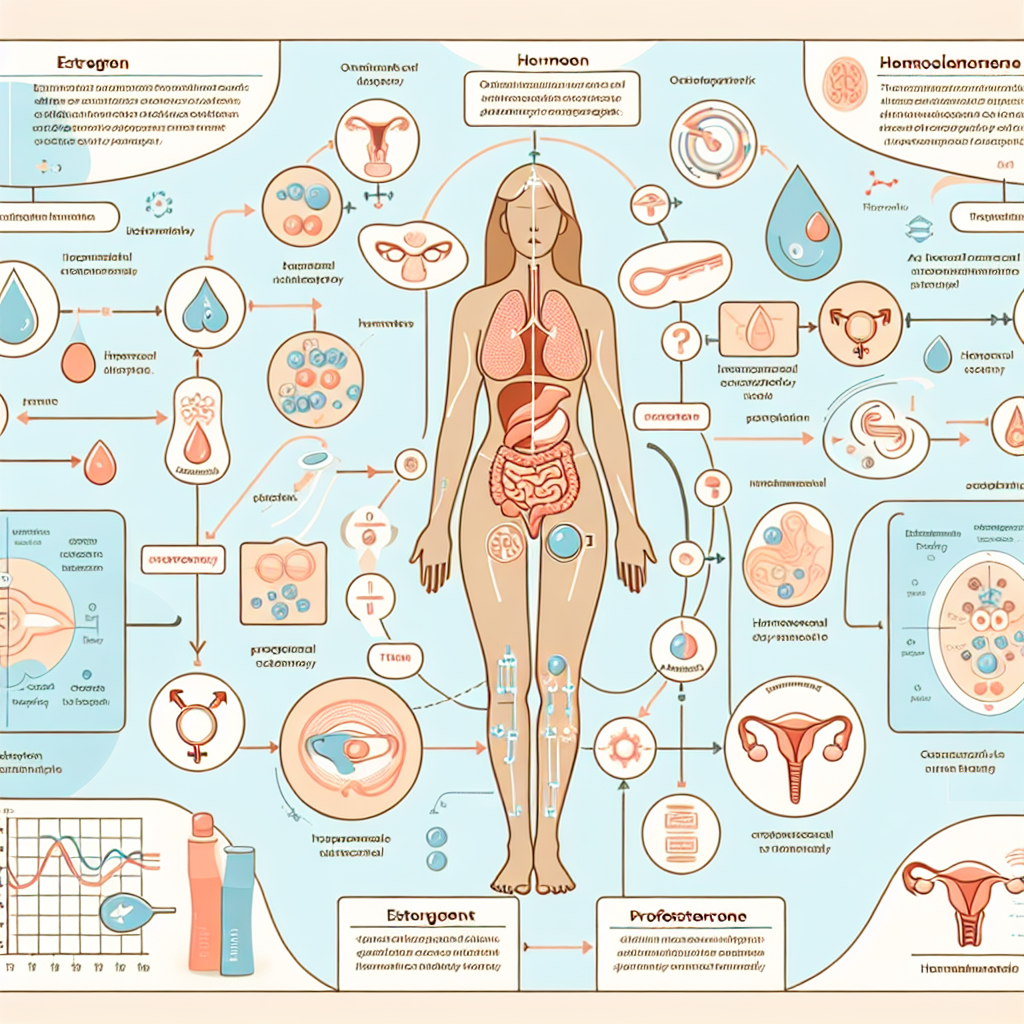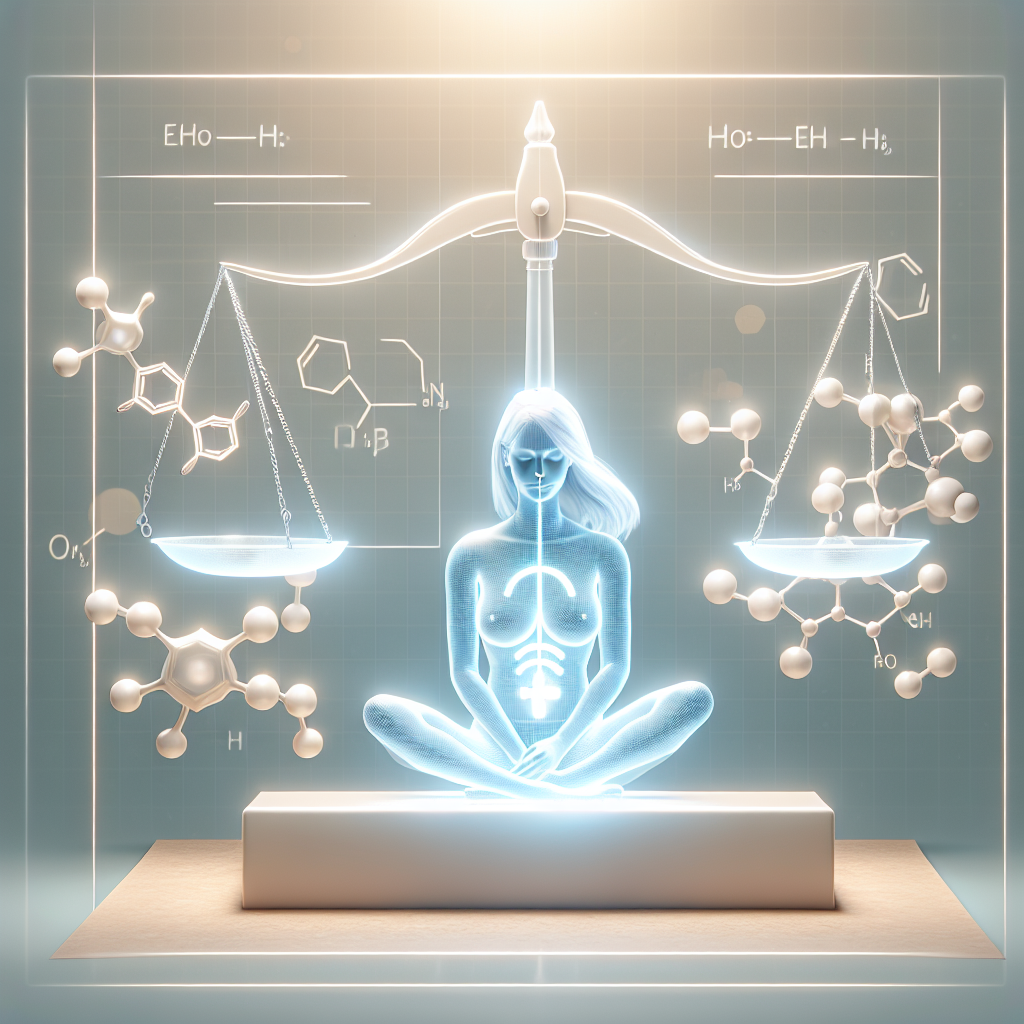The Truth About Hormonal Balance For Women

Discover the truth about hormonal balance for women. Learn more about its importance, how it affects your health, and ways to maintain it. Visit My Vibrant Vitality now.
Understanding the Importance of Hormonal Balance for Women’s Health
The truth about hormonal balance for women is a topic that is often shrouded in mystery and misconceptions. However, understanding the importance of hormonal balance for women’s health is crucial, as it plays a pivotal role in every aspect of a woman’s life, from her physical health to her emotional well-being.
Hormones are chemical messengers that travel through the bloodstream to tissues and organs. They affect many different processes, including growth and development, metabolism, sexual function, reproduction, and mood. When these hormones are in balance, they work in harmony to ensure the body functions optimally. However, when they are out of balance, it can lead to a host of health issues.
One of the most common hormonal imbalances in women is related to estrogen and progesterone, the primary female sex hormones. These hormones are responsible for regulating the menstrual cycle and play a significant role in pregnancy. An imbalance in these hormones can lead to symptoms such as irregular periods, mood swings, weight gain, fatigue, and even conditions like polycystic ovary syndrome (PCOS) and endometriosis.
Another critical hormone for women is thyroid hormone. The thyroid gland produces hormones that regulate the body’s metabolism. An underactive or overactive thyroid can lead to weight changes, fatigue, depression, and a host of other symptoms.
Moreover, the hormone cortisol, also known as the stress hormone, can also become imbalanced in women. Chronic stress can lead to an overproduction of cortisol, which can disrupt sleep, cause weight gain, contribute to diabetes and heart disease, and even accelerate the aging process.
Understanding these hormonal imbalances is the first step towards addressing them. However, it’s important to note that hormonal balance is not a one-size-fits-all concept. Each woman’s hormonal balance is unique to her, influenced by factors such as age, lifestyle, overall health, and genetics.
To maintain hormonal balance, it’s essential to lead a healthy lifestyle. This includes eating a balanced diet rich in fruits, vegetables, lean proteins, and whole grains; getting regular exercise; managing stress through techniques such as meditation and yoga; and getting enough sleep. In some cases, hormonal imbalances may require medical intervention, such as hormone replacement therapy or medication.
Furthermore, regular check-ups with a healthcare provider are crucial. They can monitor hormonal levels, identify any imbalances, and provide appropriate treatment. It’s also important for women to be aware of their bodies and to report any changes or symptoms to their healthcare provider.
In conclusion, the truth about hormonal balance for women is that it’s a complex, dynamic process that plays a crucial role in a woman’s overall health and well-being. Understanding the importance of hormonal balance and taking steps to maintain it can help women lead healthier, happier lives. It’s time to dispel the myths and misconceptions surrounding hormonal balance and to recognize it as a vital component of women’s health.
Debunking Myths: The Real Truth About Hormonal Balance in Women

Hormonal balance is a topic that has been shrouded in mystery and misconceptions for many years, particularly when it comes to women’s health. The truth about hormonal balance for women is far more complex and nuanced than many people realize. It’s not just about the menstrual cycle or menopause; it’s about the intricate interplay of hormones that regulate everything from mood to metabolism, sleep to stress response, and much more.
One of the most pervasive myths about hormonal balance in women is that it’s a static state, something that can be achieved and then maintained indefinitely. In reality, hormonal balance is a dynamic process that changes throughout a woman’s life, and even throughout her menstrual cycle. Hormone levels fluctuate naturally in response to various factors, including age, stress, diet, exercise, and sleep patterns. This is not a sign of imbalance or dysfunction; it’s a normal part of being a woman.
Another common misconception is that hormonal imbalances are always the result of some underlying disease or disorder. While it’s true that conditions like polycystic ovary syndrome (PCOS) and thyroid disorders can disrupt hormonal balance, it’s also possible for hormones to become imbalanced due to lifestyle factors. Chronic stress, poor nutrition, lack of exercise, and inadequate sleep can all throw hormones out of whack, leading to symptoms like fatigue, weight gain, mood swings, and irregular periods.
The myth that hormonal imbalances can only be treated with medication is another fallacy that needs to be debunked. While medication can certainly be a valuable tool in managing hormonal disorders, it’s not the only option. Lifestyle changes can have a profound impact on hormonal balance. Regular exercise, a balanced diet, adequate sleep, and stress management techniques can all help to regulate hormone levels naturally. In some cases, dietary supplements may also be beneficial.
Perhaps the most damaging myth about hormonal balance in women is the idea that it’s something to be feared or avoided. Hormones are not the enemy; they’re essential for our health and wellbeing. When they’re in balance, they help us to feel our best, physically and emotionally. When they’re out of balance, they can cause a range of symptoms, but these are usually signals that something in our lifestyle or environment needs to change.
The truth about hormonal balance for women is that it’s a complex, dynamic process that’s influenced by a wide range of factors. It’s not a static state, and it’s not something to be feared. It’s a vital part of our health and wellbeing, and understanding it can empower us to take better care of ourselves.
In conclusion, the real truth about hormonal balance in women is that it’s not a one-size-fits-all concept. It’s a delicate dance that changes throughout a woman’s life, and it’s influenced by everything from diet and exercise to stress and sleep. By debunking the myths and misconceptions surrounding hormonal balance, we can better understand this complex process and take steps to support our hormonal health.
How Hormonal Imbalance Affects Women: Symptoms, Causes, and Treatments
The truth about hormonal balance for women is a topic that is often shrouded in mystery and misinformation. However, understanding the role of hormones in a woman’s body is crucial to maintaining optimal health and well-being. Hormones are chemical messengers that regulate various bodily functions, including metabolism, growth and development, mood, sexual function, and reproduction. When these hormones are out of balance, it can lead to a myriad of health issues.
Hormonal imbalance in women can manifest in various ways, with symptoms often being subtle and easily overlooked. These symptoms can range from physical to emotional, and can significantly impact a woman’s quality of life. Physical symptoms may include unexplained weight gain or loss, fatigue, difficulty sleeping, changes in appetite, and problems with menstruation. Emotional symptoms can include mood swings, anxiety, depression, and irritability. In more severe cases, hormonal imbalance can lead to conditions such as polycystic ovary syndrome (PCOS), endometriosis, and infertility.
The causes of hormonal imbalance in women are multifaceted and can be attributed to a variety of factors. Lifestyle factors such as poor diet, lack of exercise, stress, and inadequate sleep can all contribute to hormonal imbalance. Additionally, certain medical conditions and medications can also disrupt hormonal balance. For instance, conditions such as thyroid disorders, diabetes, and certain cancers can affect hormone production and regulation. Furthermore, hormonal changes naturally occur throughout a woman’s life, such as during puberty, pregnancy, and menopause, which can also lead to imbalance.
When it comes to treating hormonal imbalance, the approach is often holistic and personalized, taking into account the individual’s overall health, lifestyle, and specific symptoms. Treatment may involve lifestyle modifications such as improving diet, increasing physical activity, managing stress, and ensuring adequate sleep. These changes can help to naturally balance hormones and alleviate symptoms.
In some cases, medical intervention may be necessary. This can involve hormone replacement therapy (HRT), which involves taking synthetic hormones to restore balance. However, HRT is not without risks and potential side effects, and should only be considered under the guidance of a healthcare professional. Other treatments may include medications to manage specific symptoms or underlying conditions contributing to the imbalance.
In recent years, there has been a growing interest in natural and alternative treatments for hormonal imbalance. These include the use of herbal supplements, acupuncture, yoga, and other mind-body practices. While some women find these treatments beneficial, it’s important to note that the effectiveness of these methods can vary greatly from person to person, and more research is needed to fully understand their potential benefits and risks.
In conclusion, hormonal balance is a key component of women’s health, and understanding the symptoms, causes, and treatments of hormonal imbalance is crucial. While hormonal imbalance can be challenging to navigate, with the right knowledge and resources, it is possible to manage and even overcome these challenges. It’s important for women to listen to their bodies, seek medical advice when necessary, and take proactive steps towards maintaining hormonal balance. After all, achieving hormonal balance is not just about alleviating symptoms, but also about enhancing overall health and well-being.